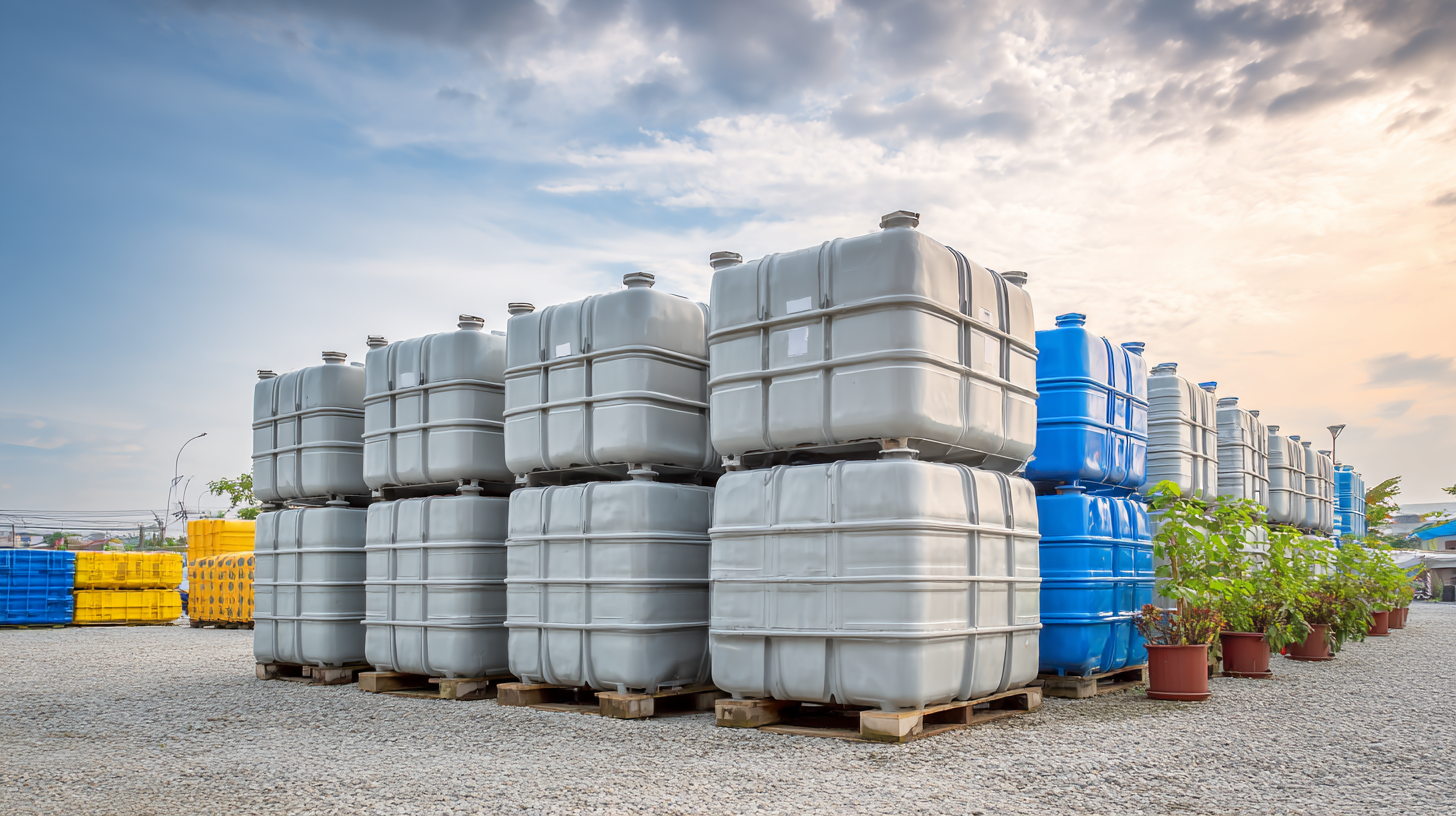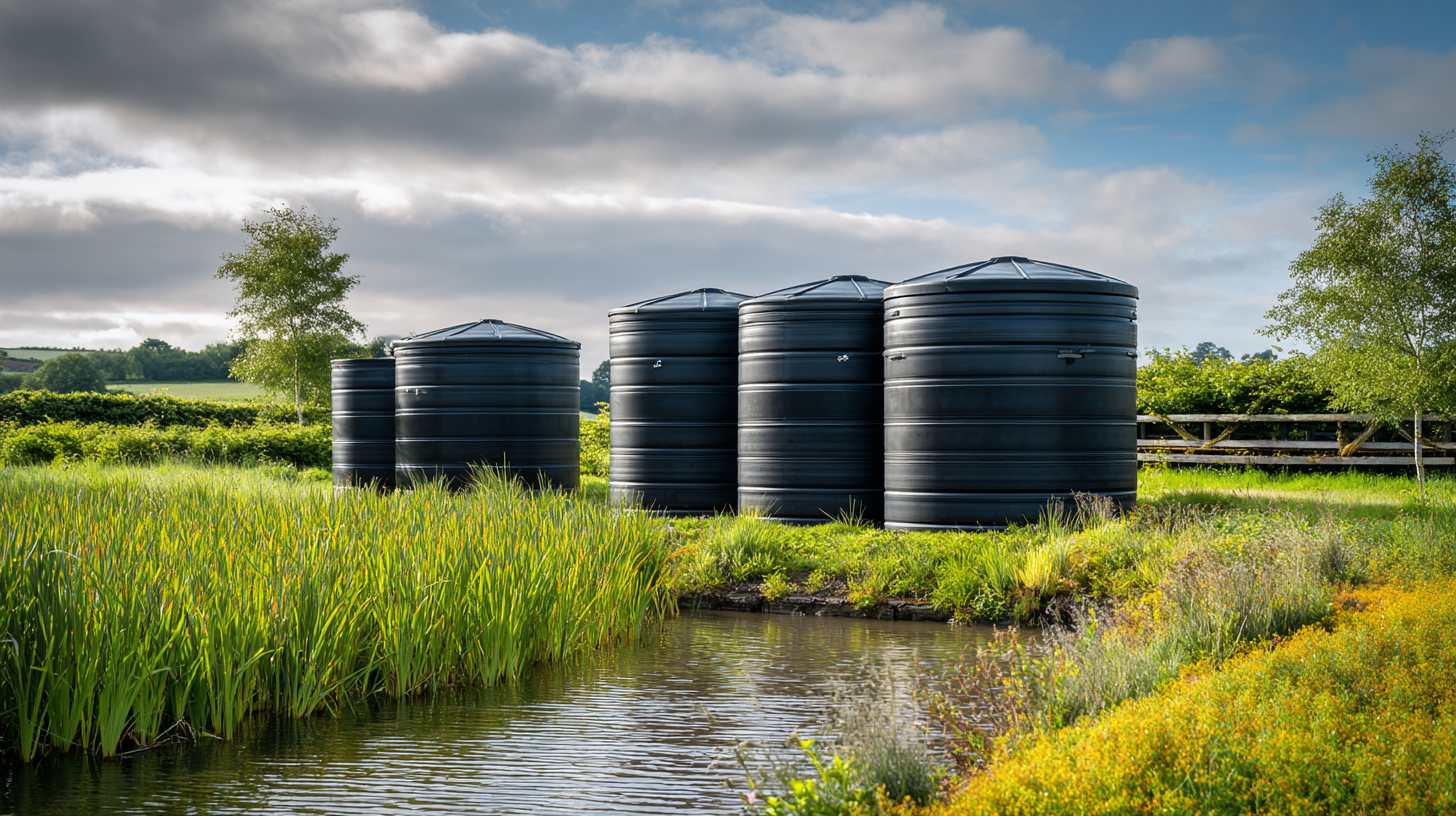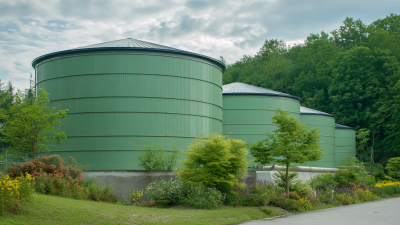The adoption of
plastic water storage tanks
is transforming the landscape of sustainable water management, addressing the
growing global water scarcity issue. According to a report by the
World Bank, nearly
2.2 billion people lack access to safely managed drinking water, highlighting the urgent need for efficient and reliable storage solutions.
 Plastic water storage tanks, with their lightweight design and corrosion-resistant properties, provide an innovative alternative to traditional metal tanks, significantly reducing maintenance costs and extending product lifespan. A study by the
Global Water Intelligence organization estimates that by
2025, the market for plastic water storage solutions could surpass
$1.5 billion, driven by an increasing preference for eco-friendly materials and practices. Furthermore, these tanks can be designed to cater to various scales of water management, from small communities to large agricultural systems, making them ideal for diverse applications and promoting sustainable practices across both rural and urban settings.
Plastic water storage tanks, with their lightweight design and corrosion-resistant properties, provide an innovative alternative to traditional metal tanks, significantly reducing maintenance costs and extending product lifespan. A study by the
Global Water Intelligence organization estimates that by
2025, the market for plastic water storage solutions could surpass
$1.5 billion, driven by an increasing preference for eco-friendly materials and practices. Furthermore, these tanks can be designed to cater to various scales of water management, from small communities to large agricultural systems, making them ideal for diverse applications and promoting sustainable practices across both rural and urban settings.
The prominence of plastic water storage tanks is significantly transforming sustainable water management practices globally. These tanks offer a versatile solution for various applications, from collecting and storing stormwater to providing emergency reserves for drinking water. Their lightweight nature and resistance to corrosion enable easy transportation and installation, making them ideal for both urban and rural settings. As communities increasingly face water scarcity and management challenges, the adoption of plastic tanks is rapidly rising, contributing to more resilient water systems.

The global market for intermediate containers, including plastic water storage tanks, is projected to grow substantially, from $10.47 billion in 2025 to $15.62 billion by 2032, with a compound annual growth rate (CAGR) of 5.88%. This growth reflects a broader trend within the water management sector, where innovations in materials and design are making sustainable practices more accessible and efficient. The move towards sustainable storage solutions not only helps in optimizing resource use but also plays a critical role in mitigating environmental impacts related to traditional water storage options.
Plastic water storage tanks are emerging as a transformative solution for sustainable water management, particularly in the context of water conservation. These tanks offer several key benefits that make them ideal for both residential and commercial applications. Firstly, their lightweight and durable nature allows for easy transportation and installation, reducing the energy and resources required compared to traditional metal or concrete tanks. Additionally, plastic tanks are resistant to corrosion and UV radiation, ensuring they can withstand various environmental conditions without leaking or degrading over time.
Moreover, plastic tanks play a crucial role in capturing and storing rainwater, which is essential for areas facing water scarcity. By incorporating rainwater harvesting systems, communities can significantly reduce reliance on municipal water supplies and lower their overall water costs. The projected growth in the global water storage system market underscores the increasing recognition of the importance of efficient water management practices. As more individuals and organizations turn to sustainable solutions, the adoption of plastic tanks is expected to rise, ultimately contributing to enhanced water conservation efforts worldwide.
Modern plastic water storage tanks are ingeniously designed to address the pressing challenges of sustainable water management. One of the most innovative features is their lightweight and durable construction, which allows for easy transportation and installation. Unlike traditional metal tanks, these plastic counterparts resist corrosion and rust, ensuring a longer lifespan and reduced maintenance costs. Their versatility enables them to be used in diverse applications, from agricultural irrigation to urban water supply.
Additionally, many modern plastic water tanks incorporate advanced technologies such as UV inhibitors, which protect the stored water from harmful ultraviolet rays. This feature helps maintain water quality and prevents the growth of algae and bacteria, making the tanks suitable for potable water storage. Furthermore, some designs include built-in filtration systems that enhance water purification processes, significantly contributing to sustainable water management practices. With these innovative advancements, plastic water storage tanks are paving the way for more efficient and environmentally friendly water solutions.
Maintaining plastic water storage systems is crucial for ensuring their longevity and efficiency in sustainable water management. One of the best practices is regular inspection of the tanks for any signs of wear or damage. This includes checking for cracks, leaks, or discoloration, which can indicate weakening material or contamination. Keeping the tanks clean and free from debris is also essential, as organic matter can lead to algal growth and compromise water quality. Utilizing a soft brush and non-toxic cleaning agents during maintenance is recommended to avoid damaging the tank material.
Another vital aspect is monitoring water quality consistently. Testing for contaminants such as bacteria, heavy metals, and pH levels ensures that the stored water remains safe for use. Implementing a filtration system can further enhance water purity. Additionally, safeguarding the tanks from extreme temperature fluctuations and direct sunlight will prevent the plastic from degrading over time. Covering the storage tanks with protective materials or placing them in shaded areas can significantly extend their lifespan and effectiveness in promoting sustainable water management practices.
| Dimension | Description | Best Practices |
|---|---|---|
| Capacity | Commonly available in various sizes ranging from 250 to 10,000 gallons. | Choose an appropriate size based on consumption needs and space availability. |
| Material | Made from durable, UV-stabilized polyethylene. | Regularly check for signs of wear and tear; replace if necessary. |
| Installation Location | Should be on a flat, stable surface to prevent tipping. | Ensure proper drainage around the tank to avoid water accumulation. |
| Maintenance | Regular cleaning is essential to prevent algae and bacteria growth. | Clean the tanks every 6-12 months using non-toxic cleaners. |
| Safety Features | Many tanks come with built-in overflow and venting systems. | Regularly inspect these features to ensure they are functioning correctly. |
| Regulatory Compliance | Must adhere to local health and safety regulations. | Consult with local authorities to stay updated on compliance requirements. |
Plastic water storage tanks play a pivotal role in promoting a circular water economy by enhancing water management strategies in both urban and rural settings. These tanks are designed not only for efficiency but also for sustainability, offering an innovative solution to the challenges of water scarcity and waste. By facilitating the collection and storage of rainwater and runoff, plastic tanks encourage the reuse of water, reducing dependency on traditional sources and minimizing environmental impact.

Moreover, the manufacturing and application of plastic water storage tanks align with principles of the circular economy. Many of these tanks are made from recycled materials, which helps to lower carbon footprints during production. Once their lifespan is over, these tanks can often be repurposed or recycled, ensuring that materials are kept in use and waste is minimized. This shift towards sustainable practices not only conserves resources but also promotes a more resilient water management system, crucial for adapting to climate change and population growth.






